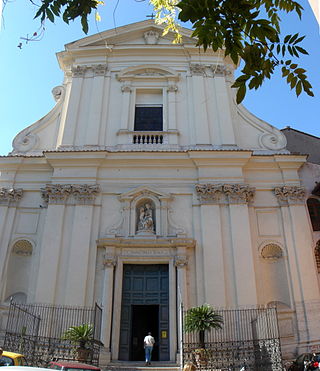100 Sights in Rome, Italy (with Map and Images)
Legend
Premium Sights
Book tickets, guided tours and activities in Rome.
Guided Free Walking Tours
Book free guided walking tours in Rome.
Welcome to your journey through the most beautiful sights in Rome, Italy! Whether you want to discover the city's historical treasures or experience its modern highlights, you'll find everything your heart desires here. Be inspired by our selection and plan your unforgettable adventure in Rome. Dive into the diversity of this fascinating city and discover everything it has to offer.
Sightseeing Tours in RomeActivities in RomePiazza Navona is a public open space in Rome, Italy. It is built on the site of the 1st century AD Stadium of Domitian and follows the form of the open space of the stadium in an elongated oval. The ancient Romans went there to watch the agones ("games"), and hence it was known as "Circus Agonalis". It is believed that over time the name changed to in avone to navone and eventually to navona.
Vatican City, officially the Vatican City State, is a sovereign country, city-state, microstate, and enclave surrounded by, and historically a part of, Rome, Italy. It became independent from Italy in 1929 with the Lateran Treaty, and is a distinct territory under "full ownership, exclusive dominion, and sovereign authority and jurisdiction" of the Holy See, which is itself a sovereign entity under international law, maintaining the city-state's temporal power, governance, diplomatic, and spiritual independence. The Vatican is also a metonym for the pope, the Holy See, and the Roman Curia. The country has the world's smallest land area and the smallest population, with 764 citizens as of 2023.
The Papal Basilica of Saint Peter in the Vatican, or simply Saint Peter's Basilica, is a church of the Italian High Renaissance located in Vatican City, an independent microstate enclaved within the city of Rome, Italy. It was initially planned in the 15th century by Pope Nicholas V and then Pope Julius II to replace the ageing Old St. Peter's Basilica, which was built in the fourth century by Roman emperor Constantine the Great. Construction of the present basilica began on 18 April 1506 and was completed on 18 November 1626.
The Vatican Museums are the public museums of Vatican City, enclave of Rome. They display works from the immense collection amassed by the Catholic Church and the papacy throughout the centuries, including several of the most well-known Roman sculptures and most important masterpieces of Renaissance art in the world. The museums contain roughly 70,000 works, of which 20,000 are on display, and currently employs 640 people who work in 40 different administrative, scholarly, and restoration departments.
The Roman theater of Ostia was built in the Augustan age and remodeled at the end of the second century. In the numbering given to the Ostian buildings by the excavators in the post-war period, it corresponds to II, VII, 2. It was built in the area that in the Republican age had been delimited for public use by the urban praetor of Rome along the Tiber, east of the walls of the Republican castrum. In the Augustan phase it could accommodate 3,000 spectators, which became 4,000 after the reconstruction.
The Palatine Hill, which relative to the seven hills of Rome is the centremost, is one of the most ancient parts of the city; it has been called "the first nucleus of the Roman Empire". The site is now mainly a large open-air museum whilst the Palatine Museum houses many finds from the excavations here and from other ancient Italian sites.
7. Sistine Chapel
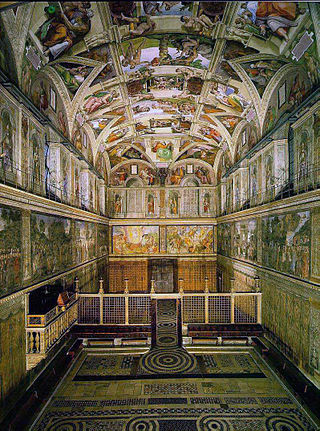
The Sistine Chapel is a chapel in the Apostolic Palace, the pope's official residence in Vatican City. Originally known as the Cappella Magna, it takes its name from Pope Sixtus IV, who had it built between 1473 and 1481. Since that time, it has served as a place of both religious and functionary papal activity. Today, it is the site of the papal conclave, the process by which a new pope is selected. The chapel's fame lies mainly in the frescoes that decorate its interior, most particularly the Sistine Chapel ceiling and The Last Judgment, both by Michelangelo.
8. Pietà

The Pietà is a Carrara marble sculpture of Jesus and Mary at Mount Golgotha representing the "Sixth Sorrow" of the Virgin Mary by Michelangelo Buonarroti, in Saint Peter's Basilica, Vatican City, for which it was made. It is a key work of Italian Renaissance sculpture and often taken as the start of the High Renaissance.
9. Basilica of Saint Mary Major
The Basilica of Saint Mary Major, or church of Santa Maria Maggiore, is one of the four major papal basilicas as well as one of the Seven Pilgrim Churches of Rome and the largest Marian church in Rome, Italy.
10. Arch of Titus
The Arch of Titus is a 1st-century AD honorific arch, located on the Via Sacra, Rome, just to the south-east of the Roman Forum. It was constructed in c. 81 AD by Emperor Domitian shortly after the death of his older brother Titus to commemorate Titus's official deification or consecratio and the victory of Titus together with their father, Vespasian, over the Jewish rebellion in Judaea.
11. ricordo della strage di via Fani
The ambush in Via Fani was a terrorist attack carried out by militants of the Red Brigades on the morning of March 16, 1978 in Via Mario Fani in Rome to kidnap Aldo Moro, an important political exponent of the Christian Democrats, killing all the members of his escort. The kidnapping lasted 55 days and ended with the discovery of Moro's body in the trunk of a red Renault 4 in via Michelangelo Caetani.
12. Ara Pacis Augustae
The Ara Pacis Augustae is an altar in Rome dedicated to the Pax Romana. The monument was commissioned by the Roman Senate on July 4, 13 BC to honour the return of Augustus to Rome after three years in Hispania and Gaul and consecrated on January 30, 9 BC. Originally located on the northern outskirts of Rome, a Roman mile from the boundary of the pomerium on the west side of the Via Flaminia, the Ara Pacis stood in the northeastern corner of the Campus Martius, the former flood plain of the Tiber River and gradually became buried under 4 metres (13 ft) of silt deposits. It was reassembled in its current location, now the Museum of the Ara Pacis, in 1938, turned 90° counterclockwise from its original orientation so that the original western side now faces south.
13. Arch of Constantine
The Arch of Constantine is a triumphal arch in Rome dedicated to the emperor Constantine the Great. The arch was commissioned by the Roman Senate to commemorate Constantine's victory over Maxentius at the Battle of the Milvian Bridge in AD 312. Situated between the Colosseum and the Palatine Hill, the arch spans the Via Triumphalis, the route taken by victorious military leaders when they entered the city in a triumphal procession. Dedicated in 315, it is the largest Roman triumphal arch, with overall dimensions of 21 m (69 ft) high, 25.9 m (85 ft) wide and 7.4 m (24 ft) deep. It has three bays, the central one being 11.5 m (38 ft) high and 6.5 m (21 ft) wide and the laterals 7.4 m (24 ft) by 3.4 m (11 ft) each. The arch is constructed of brick-faced concrete covered in marble.
14. Castle of the Holy Angel
The Mausoleum of Hadrian, more often known as Castel Sant'Angelo, is a towering rotunda in Parco Adriano, Rome, Italy. It was initially commissioned by the Roman Emperor Hadrian as a mausoleum for himself and his family. The popes later used the building as a fortress and castle, and it is now a museum. The structure was once the tallest building in Rome.
15. Basilica of Saint Paul Outside the Walls
The Papal Basilica of Saint Paul Outside the Walls is one of Rome's four major papal basilicas, along with the basilicas of Saint John in the Lateran, Saint Peter's, and Saint Mary Major, as well as one of the city’s Seven Pilgrim Churches. The basilica is the conventual church of the adjacent Benedictine abbey. It lies within Italian territory, but the Holy See owns the basilica and it is part of the Vatican's extraterritoriality.
16. Moses (Michelangelo)
Moses is a sculpture by the Italian High Renaissance artist Michelangelo, housed in the church of San Pietro in Vincoli in Rome. Commissioned in 1505 by Pope Julius II for his tomb, it depicts the biblical figure Moses with horns on his head, based on a description in chapter 34 of Exodus in the Vulgate, the Latin translation of the Bible used at that time. Some scholars believe the use of horns may often hold an antisemitic implication, while others hold that it is simply a convention based on the translation error.
17. Cloaca Máxima
The Cloaca Maxima or, less often, Maxima Cloaca, was one of the world's earliest sewage systems. Its name is related to that of Cloacina, a Roman goddess. Built during either the Roman Kingdom or early Roman Republic, it was constructed in Ancient Rome in order to drain local marshes and remove waste from the city. It carried effluent to the River Tiber, which ran beside the city. The sewer started at the Forum Augustum and ended at the Ponte Rotto and Ponte Palatino. It began as an open air canal, but it developed into a much larger sewer over the course of time. Agrippa renovated and reconstructed much of the sewer. This would not be the only development in the sewers. By the first century CE all eleven Roman aqueducts were connected to the sewer. After the Roman Empire fell the sewer still was used. By the 19th century, it became a tourist attraction. Some parts of the sewer are still used today. Whilst still being used, it was highly valued as a sacred symbol of Roman culture, and Roman engineering.
18. Basilica di Santa Maria sopra Minerva
Santa Maria sopra Minerva is one of the major churches of the Order of Preachers in Rome, Italy. The church's name derives from the fact that the first Christian church structure on the site was built directly over the ruins or foundations of a temple dedicated to the Egyptian goddess Isis, which had been erroneously ascribed to the Greco-Roman goddess Minerva.
19. Mausoleo di Costanza

Santa Costanza is a 4th-century church in Rome, Italy, on the Via Nomentana, which runs north-east out of the city. It is a round building with well preserved original layout and mosaics. It has been built adjacent to a horseshoe-shaped church, now in ruins, which has been identified as the initial 4th-century cemeterial basilica of Saint Agnes. Santa Costanza and the old Saint Agnes were both constructed over the earlier catacombs in which Saint Agnes is believed to be buried.
20. Abbey of Saint Paul Outside the Walls
The Abbey of St. Paul Outside the Walls is a Benedictine abbey located in Rome, on the Via Ostiense about two kilometers from the Aurelian walls, adjacent to the basilica of St. Paul Outside the Walls.
21. Stanze di Raffaello
The four Raphael Rooms form a suite of reception rooms in the Apostolic Palace, now part of the Vatican Museums, in Vatican City. They are famous for their frescoes, painted by Raphael and his workshop. Together with Michelangelo's Sistine Chapel ceiling frescoes, they are the grand fresco sequences that mark the High Renaissance in Rome.
22. Chiesa del Gesù
The Church of the Gesù is the mother church of the Society of Jesus (Jesuits), a Catholic religious order. Officially named Chiesa del Santissimo Nome di Gesù, its façade is "the first truly baroque façade", introducing the baroque style into architecture. The church served as a model for innumerable Jesuit churches all over the world, especially in Central Europe and in Portuguese colonies. Its paintings in the nave, crossing, and side chapels became models for art in Jesuit churches throughout Italy and Europe, as well as those of other orders. The Church of the Gesù is located at the Piazza del Gesù in Rome, and is one of the great 17th century preaching churches built by Counter-Reformation orders like the Jesuits in the Centro Storico.
23. Pyramid of Cestius
The pyramid of Cestius is an ancient Roman pyramid in Rome, Italy, near the Porta San Paolo and the Protestant Cemetery. It was built in the style of the Nubian pyramids as a tomb for Gaius Cestius, a member of the Epulones religious corporation. It stands at a fork between two ancient roads, the Via Ostiensis and another road that ran west to the Tiber along the approximate line of the modern Via Marmorata. Due to its incorporation into the city's fortifications, it is today one of the best-preserved ancient buildings in Rome.
24. The Mouth of Truth
The Mouth of Truth is an ancient Roman marble mask in Rome, Italy, which stands against the left wall of the portico of the Santa Maria in Cosmedin church, at the Piazza della Bocca della Verità, the site of the ancient Forum Boarium. According to an enduring medieval legend, it will bite off the hand of any liar who places their hand in its mouth, or, alternatively, any who utters a lie while their hand is in the mouth. It still attracts many visitors who insert their hands.
25. Basilica of Saint Augustine in Campo Marzio
The Basilica of Saint Augustine in Camp Martius, commonly known as Basilica of Saint Augustine is a Catholic titular minor basilica in the Campus Martius area of Rome, Italy. Dedicated to Saint Augustine of Hippo it serves as the motherhouse of the Augustinian Friars.
26. Non-Catholic Cemetery
The Non-Catholic Cemetery, also referred to as the Protestant Cemetery or the English Cemetery, is a private cemetery in the rione of Testaccio in Rome. It is near Porta San Paolo and adjacent to the Pyramid of Cestius, a small-scale Egyptian-style pyramid built between 18 and 12 BCE as a tomb and later incorporated into the section of the Aurelian Walls that borders the cemetery. It has Mediterranean cypress, pomegranate and other trees, and a grassy meadow. It is the final resting place of non-Catholics including but not exclusive to Protestants or British people. The earliest known burial is that of a Dr Arthur, a Protestant medical doctor hailing from Edinburgh, in 1716. The English poets John Keats and Percy Bysshe Shelley, as well as Russian painter Karl Briullov and Italian Marxist Antonio Gramsci are buried there.
27. Baths of Diocletian
The Baths of Diocletian were public baths in ancient Rome. Named after emperor Diocletian and built from AD 298 to 306, they were the largest of the imperial baths. The project was originally commissioned by Maximian upon his return to Rome in the autumn of 298 and was continued after his and Diocletian's abdication under Constantius, father of Constantine.
28. Galleria Borghese
The Galleria Borghese is an art gallery in Rome, Italy, housed in the former Villa Borghese Pinciana. At the outset, the gallery building was integrated with its gardens, but nowadays the Villa Borghese gardens are considered a separate tourist attraction. The Galleria Borghese houses a substantial part of the Borghese Collection of paintings, sculpture and antiquities, begun by Cardinal Scipione Borghese, the nephew of Pope Paul V. The building was constructed by the architect Flaminio Ponzio, developing sketches by Scipione Borghese himself, who used it as a villa suburbana, a country villa at the edge of Rome.
29. Santa Maria in Aracoeli
The Basilica of Saint Mary of the Altar in Heaven is a titular basilica and conventual church of the Franciscan Convent of Aracoeli located the highest summit of the Capitoline Hill in Rome, Italy. From 1250-1798 it was the headquarters of the General Curia of the Order of Friars Minor as well as being once of the cities principal civic churches. It is still the designated church of the city council of Rome, which uses the ancient title of Senatus Populusque Romanus. The present cardinal priest of the Titulus Sanctae Mariae de Aracoeli is Salvatore De Giorgi.
30. Arch of Septimius Severus
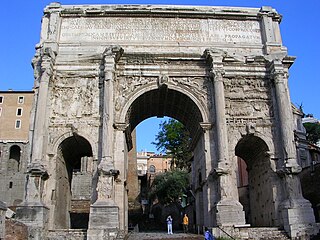
The Arch of Septimius Severus at the northwestern end of the Roman Forum is a white marble triumphal arch dedicated in 203 AD to commemorate the Parthian victories of Emperor Septimius Severus and his two sons, Caracalla and Geta, in the two campaigns against the Parthians of 194-195 and 197–199. After the death of Septimius Severus, his sons Caracalla and Geta were initially joint Emperors. Caracalla had Geta assassinated in Rome; in the practice now known as damnatio memoriae, Geta's memorials were destroyed and all images or mentions of him were removed from street buildings and monuments. Accordingly, Geta's image and inscriptions referring to him were removed from the arch.
31. Fountain of the Four Rivers
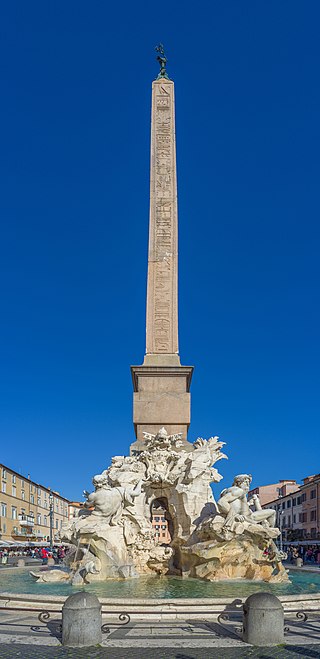
Fontana dei Quattro Fiumi is a fountain in the Piazza Navona in Rome, Italy. It was designed in 1651 by Gian Lorenzo Bernini for Pope Innocent X whose family palace, the Palazzo Pamphili, faced onto the piazza as did the church of Sant'Agnese in Agone of which Innocent was the sponsor.
32. Equestrian statue of Marcus Aurelius
The Equestrian Statue of Marcus Aurelius is an ancient Roman equestrian statue on the Capitoline Hill, Rome, Italy. It is made of bronze and stands 4.24 m tall. Although the emperor is mounted, the sculpture otherwise exhibits many similarities to the standing statues of Augustus. The original is on display in the Capitoline Museums, while the sculpture now standing in the open air at the Piazza del Campidoglio is a replica made in 1981 when the original was taken down for restoration.
33. St Ignatius
The Church of St. Ignatius of Loyola at Campus Martius is a Latin Catholic titular church, of deaconry rank, dedicated to Ignatius of Loyola, the founder of the Society of Jesus, located in Rome, Italy. Built in Baroque style between 1626 and 1650, the church functioned originally as the chapel of the adjacent Roman College, which moved in 1584 to a new larger building and was renamed the Pontifical Gregorian University. It is one of the great 17th century preaching churches built by Counter-Reformation orders in the Centro Storico.
34. Scala Santa
The Scala Sancta are a set of 28 white marble steps located in an edifice on extraterritorial property of the Holy See in Rome, Italy proximate to the Archbasilica of Saint John in Laterano. Officially, the edifice is titled the Pontifical Sanctuary of the Holy Stairs, and incorporates part of the old Papal Lateran Palace. Replica stairs flank the original staircase, which may only be climbed on one's knees. The Holy Stairs lead to the Church of Saint Lawrence in Palatio ad Sancta Sanctorum or simply the "Sancta Sanctorum", which was the personal chapel of the early Popes.
35. Mura Serviane
The Servian Wall is an ancient Roman defensive barrier constructed around the city of Rome in the early 4th century BC. The wall was built of volcanic tuff and was up to 10 m (33 ft) in height in places, 3.6 m (12 ft) wide at its base, 11 km (6.8 mi) long, and is believed to have had 16 main gates, of which only one or two have survived, and enclosed a total area of 246 hectares. In the 3rd century AD it was superseded by the construction of the larger Aurelian Walls as the city of Rome grew beyond the boundary of the Servian Wall.
36. Lapide di Valerio Verbano
The murder of Valerio Verbano was committed in Rome on February 22, 1980. A militant belonging to the area of Autonomia Operaia, he was killed with a gunshot in an ambush by three armed men who had entered his house in Via Monte Bianco with their faces covered. Despite the long and repeated investigations, the statements of the various repentants and the multiple claims that reached the police in the days following the crime, although the neo-fascist matrix is considered certain, the motive and those responsible for the murder have never been ascertained and all the investigations have not led to any judicial truth.
37. Basilica di Sant'Andrea della Valle
Sant'Andrea della Valle is a titular church and minor basilica in the rione of Sant'Eustachio of the city of Rome, Italy. The basilica is the seat of the general curia of the Theatines and is located on the Piazza Vidoni, at the intersection of Corso Vittorio Emanuele and Corso Rinascimento. It is one of the great 17th century preaching churches built by Counter-Reformation orders in the Centro Storico.
38. Baths of Trajan
The Baths of Trajan were a massive thermae, a bathing and leisure complex, built in ancient Rome and dedicated under Trajan during the kalendae of July 109, shortly after the Aqua Traiana was dedicated.
39. Santa Susanna alle Terme di Diocleziano
The Church of Saint Susanna at the Baths of Diocletian is a Catholic parish and Cistercian conventual church located on the Quirinal Hill in Rome, Italy. There has been a titular church associated to its site as far back as AD 280. The current church was rebuilt between 1585 to 1603 for a community of Cistercian nuns founded on the site in 1587 and still based there.
40. San Giorgio in Velabro
San Giorgio in Velabro is a Catholic church dedicated to St. George on Via del Velabro in the historic center of Rome in the Velabrum and the Ripa district. The church—the result of the 9th century expansion of a previous diaconal building and subsequent remodeling—stands near the Arch of Janus in the small square of the Cloaca Maxima. The location of S. Giorgio is not far from the place where the founding legend of Rome places the discovery of the twins Romulus and Remus by the she-wolf. The façade of the church encroaches upon and incorporates the Arcus Argentariorum, which was completed in 204 AD.
41. Church of Saint Louis the French
The Church of St. Louis of the French is a Catholic church near Piazza Navona in Rome. The church is dedicated to the patron saints of France: Virgin Mary, Dionysius the Areopagite and King Louis IX of France.
42. Quartiere Coppedè

The Coppedè district is a complex of buildings located in the Trieste district of Rome, in the block between Via Tagliamento, Via Arno, Via Ombrone, Via Serchio, Via Reno, Via Clitunno and Via Adige up to Piazza Trasimeno.
43. Chiesa di Trinità dei Monti
The Church of Santissima Trinità dei Monti, often called simply Trinità dei Monti, is a Roman Catholic late Renaissance titular church, part of a monastery complex in Rome. It is best known for its position above the Spanish Steps which lead down to the famous Piazza di Spagna. The church is entrusted to the Emmanuel Community, and is one of the five Francophone Catholic churches in Rome.
44. Theatre of Marcellus
The Theatre of Marcellus was an ancient open-air theatre in Rome, Italy, built in the closing years of the Roman Republic. It is located in the modern rione of Sant'Angelo. In the sixteenth century, it was converted into a palazzo.
45. Palazzo Doria Pamphilj
The Galleria Doria Pamphilj is a large private art collection housed in the Palazzo Doria Pamphilj in Rome, Italy, between Via del Corso and Via della Gatta. The principal entrance is on the Via del Corso. The palace façade on Via del Corso is adjacent to a church, Santa Maria in Via Lata. Like the palace, it is still privately owned by the princely Roman family Doria Pamphili. Tours of the state rooms often culminate in concerts of Baroque and Renaissance music, paying tribute to the setting and the masterpieces it contains.
46. Santa Maria della Vittoria
Santa Maria della Vittoria is a Catholic titular minor basilica and Discalced Carmelite conventual church dedicated to Our Lady of Victories in Rome, Italy, famously the home of Gian Lorenzo Bernini‘s masterpiece the Ecstasy of Saint Teresa. The church is in the Rione Sallustiano, on number 98 via XX Settembre, where this street intersects with Largo Santa Susanna. It is located next to the Fountain of Moses and mirrors the Church of Santa Susanna across the Largo. It is about two blocks northwest of the Piazza della Repubblica and Teatro dell'Opera metro station.
47. Chiesa di Santa Maria in Cosmedin
The Basilica of Saint Mary in Cosmedin is a minor basilican church in Rome, Italy, dedicated to the Virgin Mary. It is located in the rione (neighborhood) of Ripa. Constructed first in the sixth century as a diaconia (deaconry) in an area of the city populated by Greek immigrants, it celebrated Eastern rites and currently serves the Melkite Greek Catholic community of Rome. The church was expanded in the eighth century and renovated in the twelfth century, when a campanile was added. A Baroque facade and interior refurbishment of 1718 were removed in 1894–1899; the exterior was restored to twelfth-century form, while the architecture of the interior recalls the eighth century with twelfth-century furnishings. The narthex of the church contains the famous Bocca della Verità sculpture.
48. Milvian Bridge
The Milvian Bridge is a bridge over the Tiber in northern Rome, Italy. It was an economically and strategically important bridge in the era of the Roman Empire and was the site of the famous Battle of the Milvian Bridge in 312 AD, which led to the imperial rule of Constantine.
49. Basilica di Santa Prassede
The Basilica of Saint Praxedes, commonly known in Italian as Santa Prassede, is an early medieval titular church and minor basilica located near the papal basilica of Saint Mary Major, on Via di Santa Prassede, rione Monti in Rome, Italy. The current Cardinal Priest of Titulus Sancta Praxedis is Paul Poupard.
50. San Carlo alle Quattro Fontane
The church of San Carlo alle Quattro Fontane, also called San Carlino, is a Roman Catholic church in Rome, Italy. The church was designed by the architect Francesco Borromini and it was his first independent commission. It is an iconic masterpiece of Baroque architecture, built as part of a complex of monastic buildings on the Quirinal Hill for the Spanish Trinitarians, an order dedicated to the freeing of Christian slaves. He received the commission in 1634, under the patronage of Cardinal Francesco Barberini, whose palace was across the road. However, this financial backing did not last and subsequently the building project suffered various financial difficulties. It is one of at least three churches in Rome dedicated to San Carlo, including San Carlo ai Catinari and San Carlo al Corso.
51. Basilica di Santa Cecilia in Trastevere
Santa Cecilia in Trastevere is a 5th-century church in Rome, Italy, in the Trastevere rione. It is dedicated to the Roman martyr Saint Cecilia and serves as the conventual church for the adjacent abbey of Benedictine nuns.
52. Ponte Sant'Angelo
Ponte Sant'Angelo, originally the Aelian Bridge or Pons Aelius, is a Roman bridge in Rome, Italy, completed in 134 AD by Roman Emperor Hadrian, to span the Tiber from the city centre to his newly constructed mausoleum, now the towering Castel Sant'Angelo. The bridge is faced with travertine marble and spans the Tiber with five arches, three of which are Roman; it was approached by means of a ramp from the river. The bridge is now solely pedestrian and provides a scenic view of Castel Sant'Angelo. It links the rioni of Ponte, and Borgo, to which the bridge administratively belongs.
53. Acqua Marcia
The Aqua Marcia is one of the longest of the eleven aqueducts that supplied the city of Rome. The aqueduct was built between 144–140 BC, during the Roman Republic. The still-functioning Acqua Felice from 1586 runs on long stretches along the route of the Aqua Marcia.
54. La Casina delle Civette
The Museum of the Casina delle Civette is a former residence of the Torlonia family transformed into a museum. It is located within the park of Villa Torlonia in Rome. The name derives from the recurring theme of owls inside and outside the house. In the nineteenth century it was known as the Swiss Hut for its rustic appearance similar to that of an alpine hut or a Swiss chalet.
55. Santa Maria Immacolata a Via Veneto
Santa Maria della Concezione dei Cappuccini is a Roman Catholic church located at Via Vittorio Veneto, 27, just north of the Piazza Barberini, in Rome, Italy. It is the first Roman church dedicated to the Immaculate Conception.
56. Temple of Hercules Victor
The Temple of Hercules Victor or Hercules Olivarius is a Roman temple in Piazza Bocca della Verità, the former Forum Boarium, in Rome, Italy. It is a tholos, a round temple of Greek 'peripteral' design completely surrounded by a colonnade. This layout caused it to be mistaken for a temple of Vesta until it was correctly identified by Napoleon's Prefect of Rome, Camille de Tournon.
57. pedestal of colossus of Nero
The Colossus of Nero was a 30-metre (98 ft) bronze statue that the Emperor Nero created in the vestibule of his Domus Aurea, the imperial villa complex which spanned a large area from the north side of the Palatine Hill, across the Velian ridge to the Esquiline Hill in Rome. It was modified by Nero's successors into a statue of the sun god Sol. The statue was eventually moved to a spot outside the Flavian Amphitheatre, which became known, by its proximity to the Colossus, as the Colosseum.
58. Turtle Fountain
The Fontana delle Tartarughe is a fountain of the late Italian Renaissance, located in Piazza Mattei, in the Sant'Angelo district of Rome, Italy. It was built between 1580 and 1588 by the architect Giacomo della Porta and the sculptor Taddeo Landini. The bronze turtles around the upper basin, usually attributed either to Gian Lorenzo Bernini or Andrea Sacchi, were added in either 1658 or 1659 when the fountain was restored.
59. Forum Boarium
The Forum Boarium was the cattle market or forum venalium of ancient Rome. It was located on a level piece of land near the Tiber between the Capitoline, the Palatine and Aventine hills. As the site of the original docks of Rome and adjacent to the Pons Aemilius, the earliest stone bridge across the Tiber, the Forum Boarium experienced intense commercial activity.
60. Sepolcro degli Scipioni
The Tomb of the Scipios, also called the hypogaeum Scipionum, was the common tomb of the patrician Scipio family during the Roman Republic for interments between the early 3rd century BC and the early 1st century AD. Then it was abandoned and within a few hundred years its location was lost.
61. Villa Medici
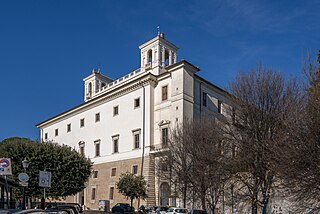
The Villa Medici is a Mannerist villa and an architectural complex with a garden contiguous with the more extensive Borghese gardens, on the Pincian Hill next to Trinità dei Monti in Rome, Italy. The Villa Medici, founded by Ferdinando I de' Medici, Grand Duke of Tuscany and now property of the French State, has housed the French Academy in Rome since 1803. A musical evocation of its garden fountains features in Ottorino Respighi's Fountains of Rome.
62. Temple of Portunus
The Temple of Portunus is an ancient Roman temple in Rome, Italy. It was built beside the Forum Boarium, the Roman cattle market associated with Hercules, which was adjacent to Rome's oldest river port and the oldest stone bridge across the Tiber River, the Pons Aemilius. It was probably dedicated to the gateway god Portunus although the precise dedication remains unclear as there were several other temples in the area besides his. It was misidentified as the Temple of Fortuna Virilis from the Renaissance and remains better known by this name. The temple is one of the best preserved of all Roman temples.
63. Castello
The presidential estate of Castelporziano is one of the three residences of the President of the Italian Republic, together with the Quirinale Palace in Rome and Villa Rosebery in Naples. It is located in the Z. XXIX Castel Porziano area, within the Municipality of Rome X of Roma Capitale. It is about 25 km from the center of Rome and covers an area of 59 km² which also includes some historic hunting estates, such as Trafusa, Trafusina, Riserve Nuove and Capocotta.
64. Statua parlante di Pasquino
Pasquino or Pasquin is the name used by Romans since the early modern period to describe a battered Hellenistic-style statue perhaps dating to the third century BC, which was unearthed in the Parione district of Rome in the fifteenth century. It is located in a piazza of the same name on the northwest corner of the Palazzo Braschi ; near the site where it was unearthed.
65. Horti Sallustiani
The Gardens of Sallust was an ancient Roman estate including a landscaped pleasure garden developed by the historian Sallust in the 1st century BC. It occupied a large area in the northeastern sector of Rome, in what would become Region VI, between the Pincian and Quirinal hills, near the Via Salaria and later Porta Salaria. The modern rione is now known as Sallustiano.
66. Basilica of St. Pudentiana
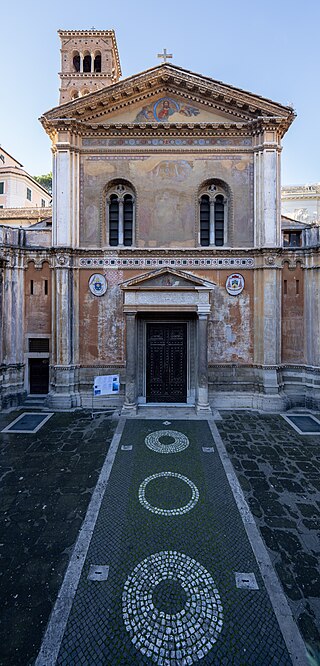
Santa Pudenziana is a church of Rome, a basilica built in the 4th century and dedicated to Saint Pudentiana, sister of Praxedes and daughter of Pudens. It is one of the national churches in Rome, associated with Filipinos.
67. Sant’Eustachio in Campo Marzio
Sant'Eustachio is a Roman Catholic titular church and minor basilica in Rome, named for the martyr Saint Eustace. It is located on Via di Sant'Eustachio in the rione Sant'Eustachio, a block west of the Pantheon and via della Rotonda, and a block east of Sant'Ivo alla Sapienza and the Via della Dogana Vecchia.
68. Chiesa di Santa Maria della Pace
Santa Maria della Pace is a Catholic church in Rome, Italy, not far from Piazza Navona. The building lies in rione Ponte. It is part of a conventual structure that includes the Chiostro del Bramante formerly home to Canons Regular of the Lateran and later the Order of Preachers. The monastery is now used for secular purposes while the church has become one of Rome's national churches, devoted to the people of Chile.
69. Villa Farnesina

The Villa Farnesina is a Renaissance suburban villa in the Via della Lungara, in the district of Trastevere in Rome, central Italy. Built between 1506 and 1510 for Agostino Chigi, the Pope's wealthy Sienese banker, it was a novel type of suburban villa, subsidiary to his main Palazzo Chigi in the city. It is especially famous for the rich frescos by Raphael and other High Renaissance artists that remain in situ.
70. Catacombs of Saint Calixt
The Catacomb(s) of Callixtus is one of the Catacombs of Rome on the Appian Way, most notable for containing the Crypt of the Popes, which once contained the tombs of several popes from the 2nd to 4th centuries.
71. Vatican Art Gallery
The new Vatican Pinacoteca is an art gallery that is part of the Vatican Museums. It was inaugurated on October 27, 1932 in the building built by the architect Luca Beltrami, specifically to house the art gallery, at the behest of Pope Pius XI.
72. Chiesa di Sant'Agnese in Agone
Sant'Agnese in Agone is a 17th-century Baroque church in Rome, Italy. It faces onto the Piazza Navona, one of the main urban spaces in the historic centre of the city and the site where the Early Christian Saint Agnes was martyred in the ancient Stadium of Domitian. Construction began in 1652 under the architects Girolamo Rainaldi and his son Carlo Rainaldi. After numerous quarrels, the other main architect involved was Francesco Borromini.
73. Monte Testaccio
Monte Testaccio or Monte Testaceo, also known as Monte dei Cocci, is an artificial mound in Rome composed almost entirely of testae, fragments of broken ancient Roman pottery, nearly all discarded amphorae dating from the time of the Roman Empire, some of which were labelled with tituli picti. It is one of the largest spoil heaps found anywhere in the ancient world, covering an area of 2 hectares at its base and with a volume of approximately 580,000 cubic metres (760,000 cu yd), containing the remains of an estimated 53 million amphorae. It has a circumference of nearly a kilometre (0.6 mi) and stands 35 metres (115 ft) high, though it was probably considerably higher in ancient times. It stands a short distance away from the east bank of the River Tiber, near the Horrea Galbae where the state-controlled reserve of olive oil was stored in the late 2nd century AD. The mound later had both religious and military significance.
74. Ninfeo di Alessandro Severo
The Nymphaeum of Alexander Severus, a monument better known as the "Trophies of Marius", is a fountain of ancient Rome, the remains of which are preserved in the northern corner of Piazza Vittorio Emanuele II in the Esquilino district.
75. Basilica di Sant'Agnese fuori le mura
The church of Saint Agnes Outside the Walls is a titular church, a minor basilica in Rome, on a site sloping down from the Via Nomentana, which runs north-east out of the city, still under its ancient name. What are said to be the remains of Saint Agnes are below the high altar. The church is built over the Catacombs of Saint Agnes, where the saint was originally buried, and which may still be visited from the church. A large basilica with the same name was built nearby in the 4th century and its ruins can be seen near Santa Costanza, in the same site. The existing church was built by Pope Honorius I in the 7th century, and largely retains its original structure, despite many changes to the decoration. In particular the mosaic in the apse of Agnes, Honorius, and another Pope is largely in its original condition. The current Cardinal Priest of the Titulus S. Agnetis Extra moenia is Camillo Ruini.
76. Palazzo Venezia
The Palazzo Venezia or Palazzo Barbo, formerly "'Palace of Saint Mark'", is a large early Renaissance palace in central Rome, Italy, situated to the north of the Capitoline Hill. Today the property of the Republic of Italy it houses the National Museum of the Palazzo Venezia. The main (eastern) facade measures 77 metres (253 ft) in length, with a height of about 31 metres (102 ft). The north wing, containing the "Cibo Apartment", extending westwards, measures 122 metres (400 ft) in length. It covers an area of 1.2 hectares and encloses two gardens and the Basilica of Saint Mark. It was built in the present form during the 1450s by Cardinal Pietro Barbo (1417-1471), titular holder of the Basilica of Saint Mark, who from 1464 ruled as Pope Paul II. Barbo, a Venetian by birth as was customary for cardinals of the Basilica of Saint Mark, lived there even as pope and amassed there a great collection of art and antiquities. During the first half of the 20th century it became the residence and headquarters of the fascist dictator Benito Mussolini, who made notable orations from its balcony to huge crowds filling the Piazza Venezia.
77. Chiesa dei Santi Vitale e Compagni Martiri in Fovea
The early Christian imperial basilica of the Saints Martyrs Vitale, Valeria, Gervasio and Protasio known more commonly as the basilica of San Vitale and Compagni Martiri in Fovea or more simply as San Vitale al Quirinale. It is the oldest Catholic place of worship in the historic center of Rome, located in via Nazionale. The imperial basilica of San Vitale al Quirinale, built under the pontificate of Pope Siricius after 386 and consecrated and richly decorated by Pope Innocent in 402 is the first public Christian basilica with a baptistery not founded on pre-existing pagan temples, mentioned in the Liber pontificalis, built by the Emperor Theodosius at the behest of Saint Ambrose of Milan, in honor of the miraculous discovery of the bodies of martyrs Gervasius and Protasius in Milan. It is the most frescoed basilica in Rome.
78. Acquedotto Vergine
The Aqua Virgo was one of the eleven Roman aqueducts that supplied the city of ancient Rome. It was completed in 19 BC by Marcus Agrippa, during the reign of the emperor Augustus and was built mainly to supply the contemporaneous Baths of Agrippa in the Campus Martius.
79. Basilica di San Lorenzo in Lucina
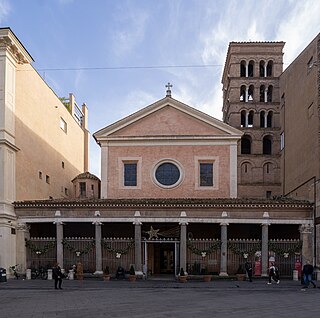
The Minor Basilica of St. Lawrence in Lucina is a Roman Catholic parish, titular church, and minor basilica in central Rome, Italy. The basilica is located in Piazza di San Lorenzo in Lucina in the Rione Colonna, about two blocks behind the Palazzo Montecitorio, proximate to the Via del Corso.
80. Teatro Capranica
The Teatro Capranica is a theatre situated at 101 Piazza Capranica in the Colonna district of Rome. Originally constructed in 1679 by the Capranica family and housed in the early Renaissance Palazzo Capranica, it was the second public theatre to open in Rome. It was the site of many premieres of Baroque operas including Caldara's Tito e Berenice, Scarlatti's Griselda, and Vivaldi's Ercole su'l Termodonte. The Capranica ceased operating as a full-scale theatre and opera house in 1881 and in 1922 was converted into a cinema. Following the closure of the cinema in 2000, it has functioned on a hire basis as a conference and performance venue.
81. Basilica dei Ss. Quattro Coronati
Santi Quattro Coronati is an ancient titular and conventual minor basilica and Augustinian convent in Rome, Italy. The church dates back to the fourth or fifth century, and is devoted to four anonymous saints and martyrs. The complex of the basilica with its two courtyards, the fortified Cardinal Palace with the Saint Silvester Chapel, and the monastery with its cosmatesque cloister is built in a silent and green part of Rome, between the Colosseum and San Giovanni in Laterano.
82. Tor Paterno
Laurentum was an ancient Roman city of Latium situated between Ostia and Lavinium, on the west coast of the Italian Peninsula southwest of Rome. Roman writers regarded it as the original capital of Italy, before Lavinium assumed that role after the death of King Latinus. In historical times, Laurentum was united with Lavinium, and the name Lauro-Lavinium is sometimes used to refer to both.
83. Basilica di San Marco
San Marco is a minor basilica in Rome dedicated to Saint Mark the Evangelist located in the small Piazza di San Marco adjoining Piazza Venezia. It was first built in 336 by Pope Mark, whose remains are in an urn located below the main altar. The basilica is the national church of Venice in Rome.
84. San Crisogono
San Crisogono is a church in Rome dedicated to the martyr Saint Chrysogonus. It was one of the tituli, the first parish churches of Rome, and was probably built in the 4th century under Pope Sylvester I (314–335).
85. Teatro dell'Opera
The Teatro dell'Opera di Roma is an opera house in Rome, Italy. Originally opened in November 1880 as the 2,212 seat Costanzi Theatre, it has undergone several changes of name as well modifications and improvements. The present house seats 1,560.
86. Museo di Storia della Medicina
The Museum of the History of Medicine of the La Sapienza University of Rome, founded by Adalberto Pazzini in 1938, is located in Viale dell'Università in Rome and is one of the museums of the La Sapienza Museum Complex. The museum preserves a rich collection of objects, mostly original, which allow us to reconstruct the evolution of medical knowledge and practices from prehistory to the genomic revolution.
87. Basilica of St. Bartholomew on the Island
The Basilica of St. Bartholomew on the Island is a titular minor basilica, located in Rome, Italy. It was founded in 998 by Otto III, Holy Roman Emperor and contains the putative relics of St. Bartholomew the Apostle. It is located on Tiber Island, on the site of the former temple of Aesculapius, which had cleansed the island of its former ill-repute among the Romans and established its reputation as a hospital, continued under Christian auspices today.
88. Temple of Apollo Sosianus
The Temple of Apollo Sosianus is a Roman temple dedicated to Apollo in the Campus Martius, next to the Theatre of Marcellus and the Porticus Octaviae, in Rome, Italy. Its present name derives from that of its final rebuilder, Gaius Sosius.
89. Sepolcro del fornaio Eurisace
The tomb of Marcus Vergilius Eurysaces the baker is one of the largest and best-preserved freedman funerary monuments in Rome. Its sculpted frieze is a classic example of the "plebeian style" in Roman sculpture. Eurysaces built the tomb for himself and perhaps also his wife Atistia around the end of the Republic. Located in a prominent position just outside today's Porta Maggiore, the tomb was transformed by its incorporation into the Aurelian Wall; a tower subsequently erected by Honorius covered the tomb, the remains of which were exposed upon its removal by Gregory XVI in 1838. What is particularly significant about this extravagant tomb is that it was built by a freedman, a former slave.
90. Santa Maria in Via Lata
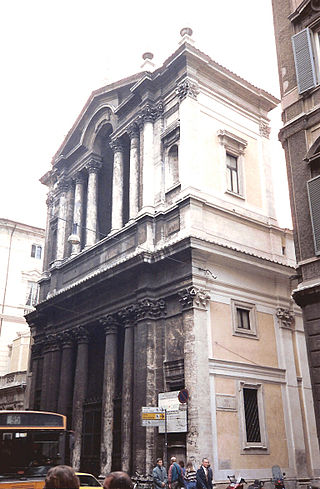
Santa Maria in Via Lata is a church on the Via del Corso, in Rome, Italy. It stands diagonal from the church of San Marcello al Corso. It is the stational church for Tuesday in the fifth week of lent.
91. Catacomb of Priscilla
The Catacomb of Priscilla is an archaeological site on the Via Salaria in Rome, Italy, situated in what was a quarry in Roman times. This quarry was used for Christian burials from the late 2nd century through the 4th century. This catacomb, according to tradition, is named after the wife of the Consul Manius Acilius Glabrio; he is said to have become a Christian and was killed on the orders of Domitian. Some of the walls and ceilings display fine decorations illustrating Biblical scenes.
92. Basilica di San Sebastiano fuori le mura
San Sebastiano fuori le mura, or San Sebastiano ad Catacumbas, is a minor basilica in Rome, Central Italy. Up to the Great Jubilee of 2000, San Sebastiano was one of the Seven Pilgrim Churches of Rome, and many pilgrims still favour the traditional list.
93. Chiesa di Santo Spirito in Sassia
Church of the Holy Spirit in the Saxon District is a 12th-century titular church in Rome, Italy. It is in Borgo Santo Spirito, a street which got its name from the church, placed in the southern part of Rione Borgo and has been connected since its foundation to the adjacent Ospedale di Santo Spirito in Sassia. The current holder of the titulus is Cardinal-Deacon Dominique Mamberti. It has been the official sanctuary of Divine Mercy since 1994.
94. Chiesa di Santa Maria in Dominica alla Navicella
The Minor Basilica of St. Mary in Domnica alla Navicella, or simply Santa Maria in Domnica or Santa Maria alla Navicella, is a Roman Catholic basilica in Rome, Italy, dedicated to the Blessed Virgin Mary and active in local charity according to its long tradition. It is one of the best examples of the Carolingian Renaissance in Rome. It has been the titular church of Cardinal Marcello Semeraro since 28 November 2020.
95. Museo Pietro Canonica
The Pietro Canonica Museum is the house-museum of the sculptor Pietro Canonica and is part of the system of Museums in the Municipality of Rome. It is located in via Pietro Canonica 2, near Piazza di Siena, in Villa Borghese, at the fortress. The house, where the artist lived until his death, was donated to him by the municipality of Rome which now manages the museum.
96. Porta Magica
The Alchemical Door, also known as the Alchemy Gate or Magic Portal, is a monument built between 1678 and 1680 by Massimiliano Palombara, marquis of Pietraforte, in his residence, the villa Palombara, which was located on the Esquiline Hill, near Piazza Vittorio, in Rome. This is the only one of five former gates of the villa that remains; there was a lost door on the opposite side dating them to 1680 and four other lost inscriptions on the walls of the mansion inside the villa.
97. San Filippo Neri
San Filippo Neri is a deconsecrated church in Rome, important for historical and artistic reasons. The church, facing the Via Giulia, was built during the Baroque age. San Filippo was supposed to be demolished together with the surrounding neighborhood in the late 1930s, but due to the onset of WWII the demolition was halted. Abandoned and desecrated after the war, it has been restored in 2000, but maintains a secular usage and is not accessible.
98. Portico d'Ottavia
The Porticus Octaviae is an ancient structure in Rome. The colonnaded walks of the portico enclosed the Temples of Juno Regina (north) and Jupiter Stator (south), as well as a library. The structure was used as a fish market from the medieval period up to the end of the 19th century.
99. Caligula's Nymphaeum (Horti Lamiani)
The Horti Lamiani was a luxurious complex consisting of an ancient Roman villa with large gardens and outdoor rooms. It was located on the Esquiline Hill in Rome, in the area around the present Piazza Vittorio Emanuele. The horti were created by the consul Lucius Aelius Lamia, a friend of Emperor Tiberius, and they soon became imperial property. They are of exceptional historical-topographical importance. Along with other ancient Roman horti on the Quirinal, Viminal and Esquiline hills, they were discovered during the construction work for the expansion of Rome at the end of 1800s.
100. Santa Maria della Scala
Santa Maria della Scala is a titular church in Rome, Italy, located in the Trastevere rione. It is served by friars of the Discalced Carmelite Order. Cardinal Ernest Simoni took possession of the titular church on 11 February 2017.
Share
Disclaimer Please be aware of your surroundings and do not enter private property. We are not liable for any damages that occur during the tours.
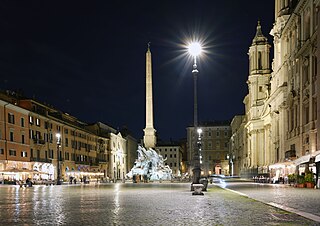
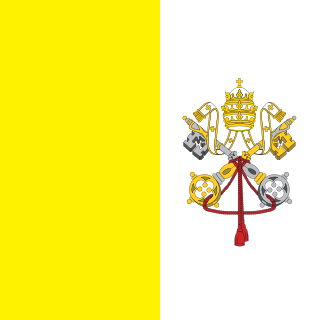


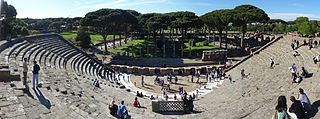
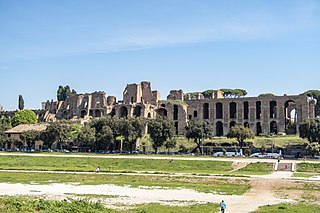
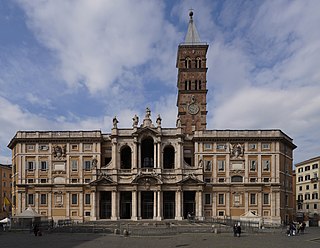
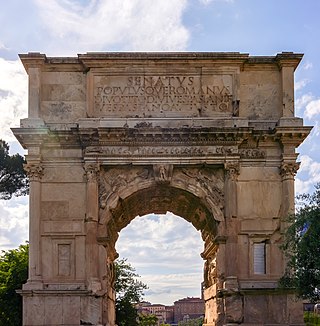
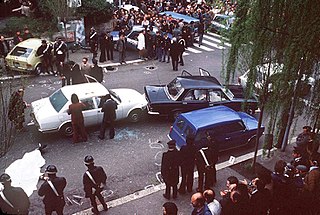
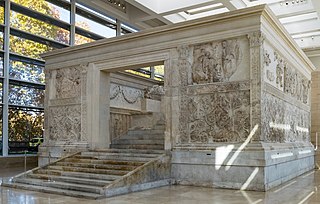
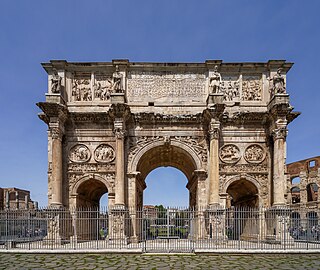

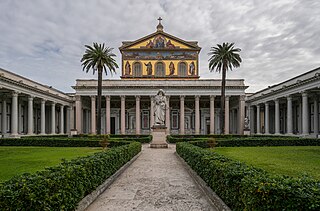
.jpg)
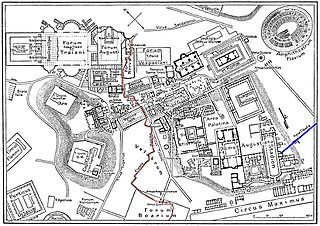
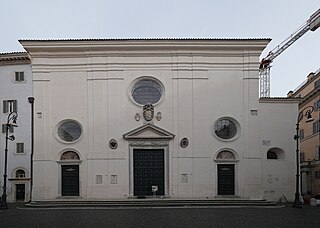
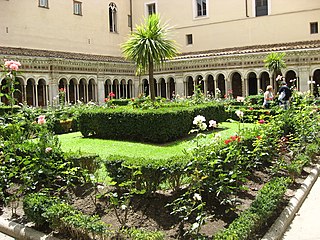
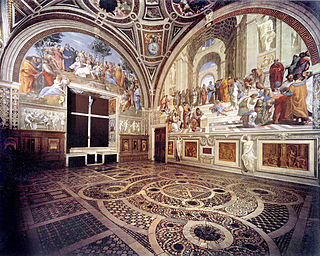
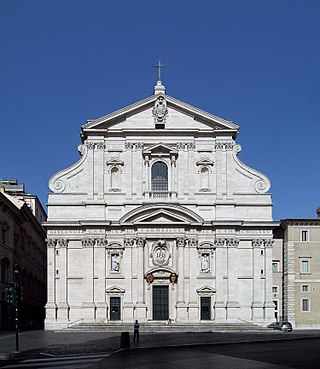
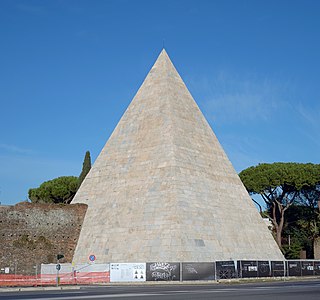


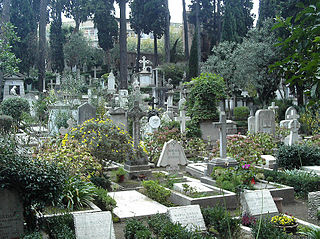


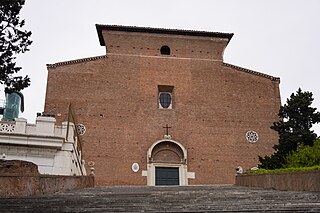
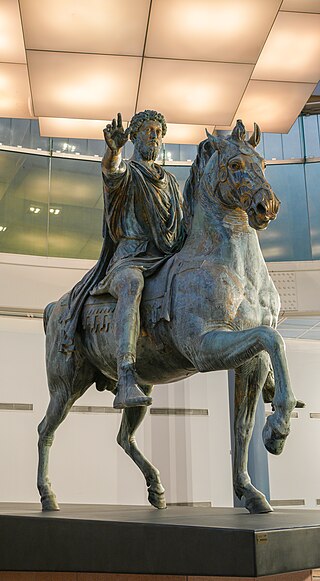
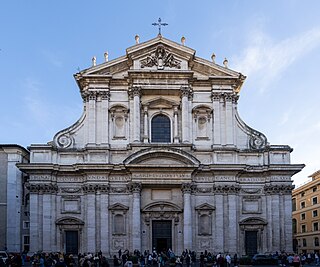
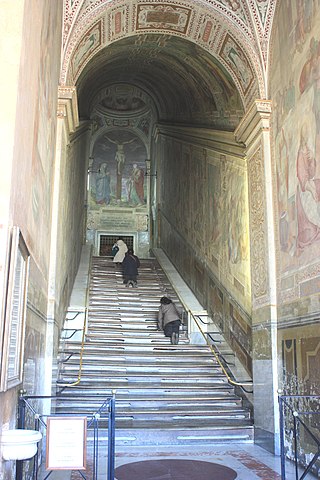
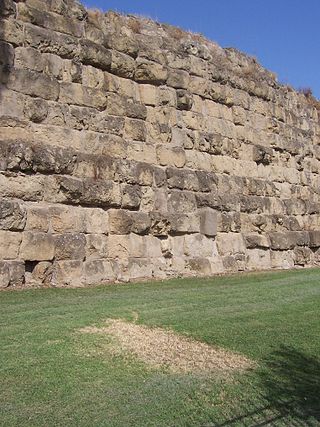
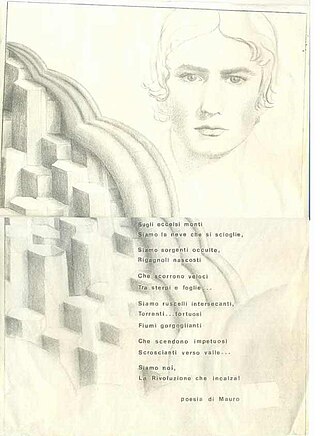
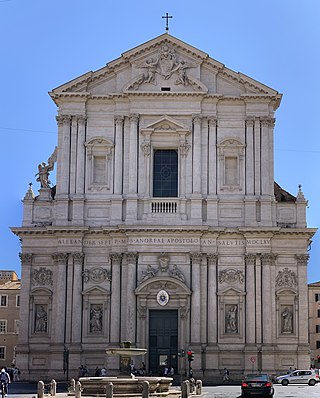


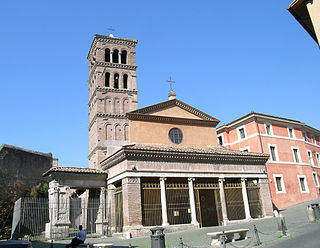
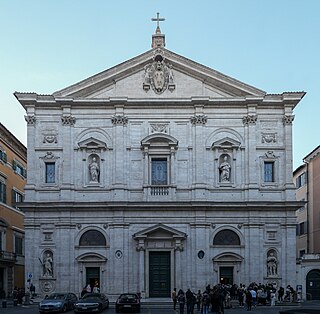


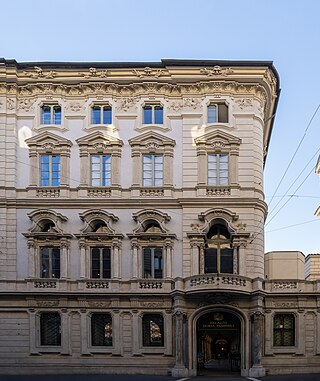
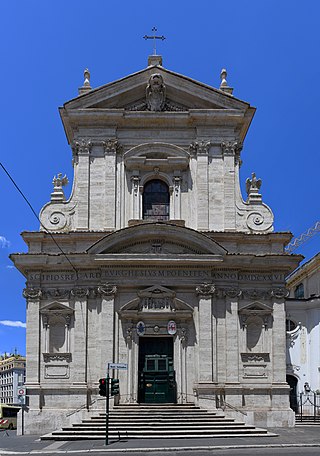

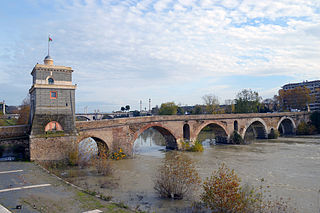
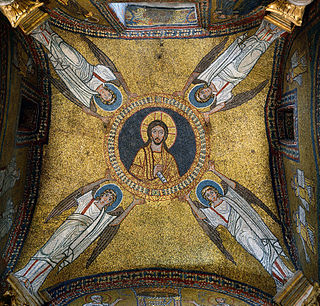

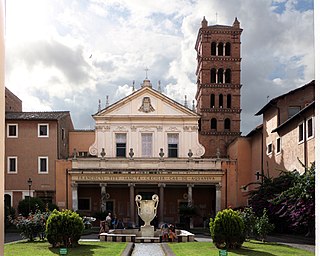

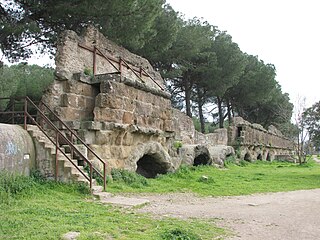
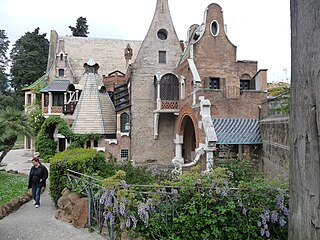
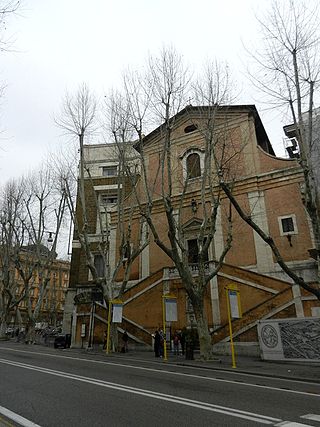

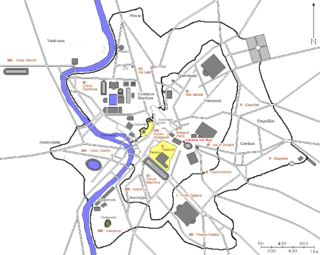
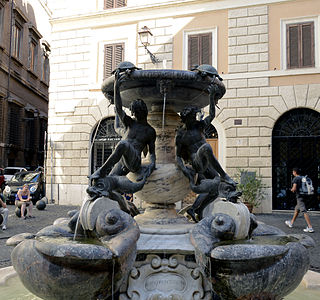
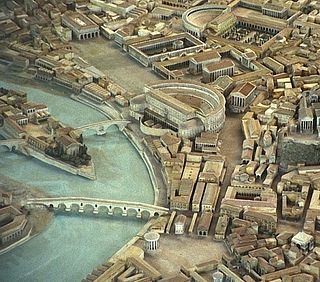
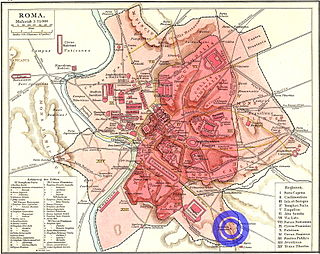



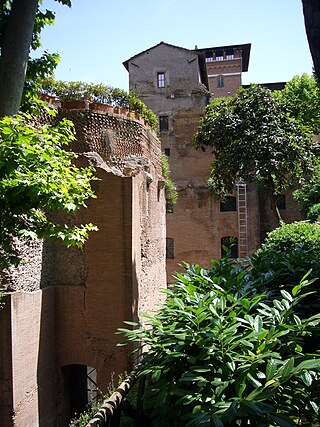
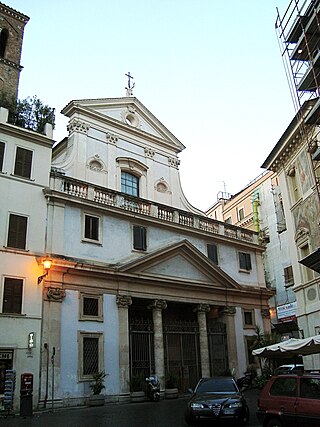
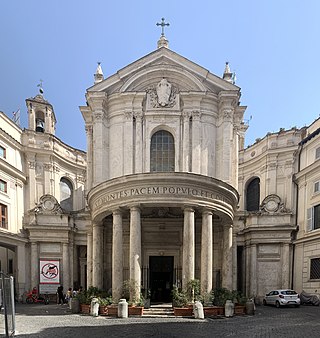

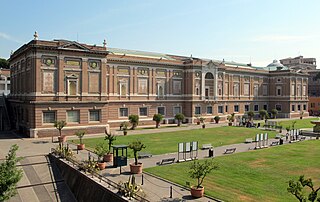
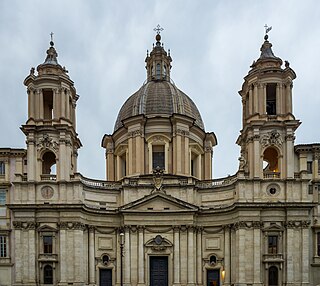

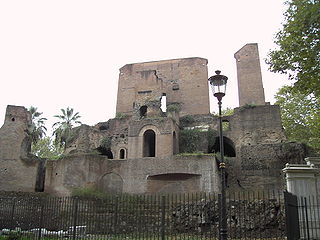




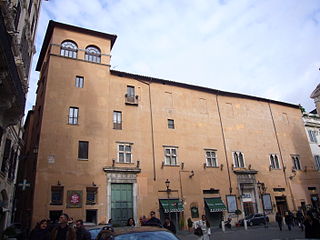
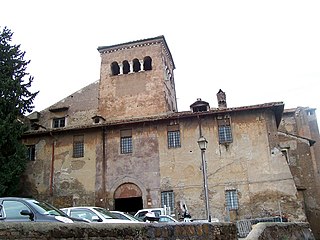


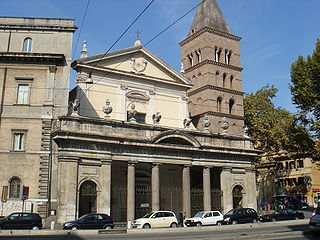
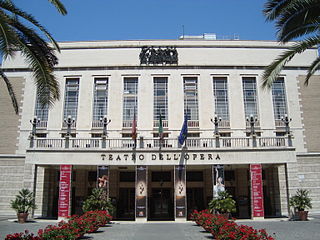
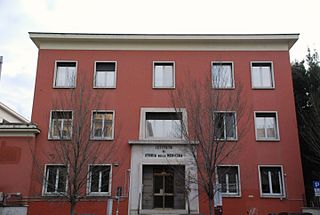
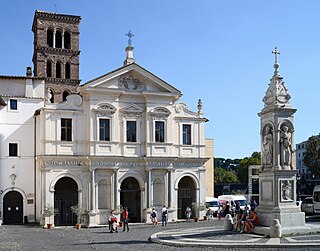
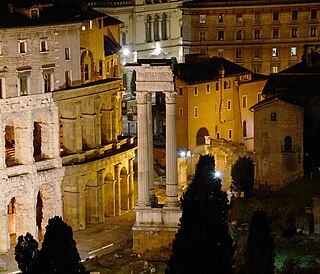

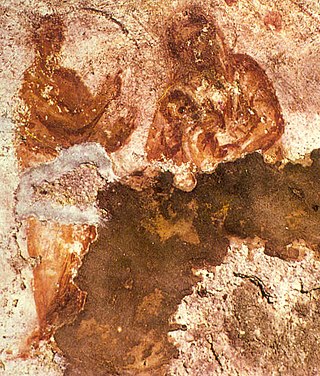
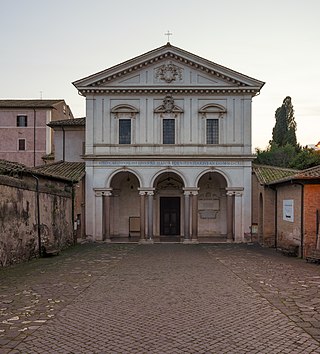

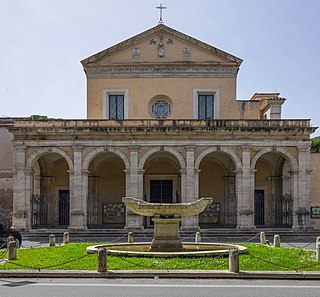
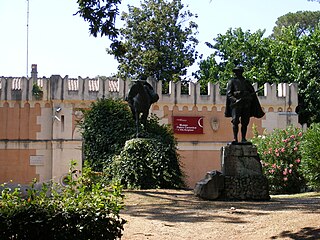
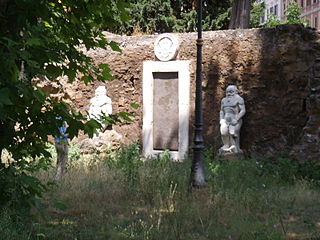

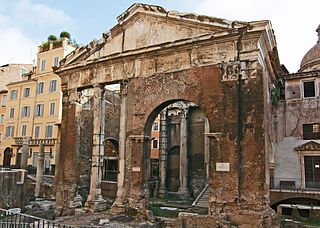
.jpg)
